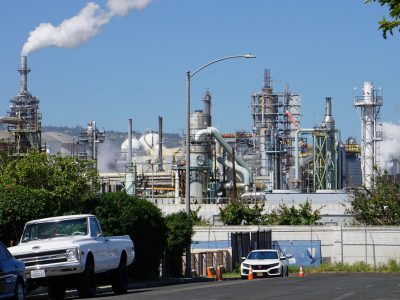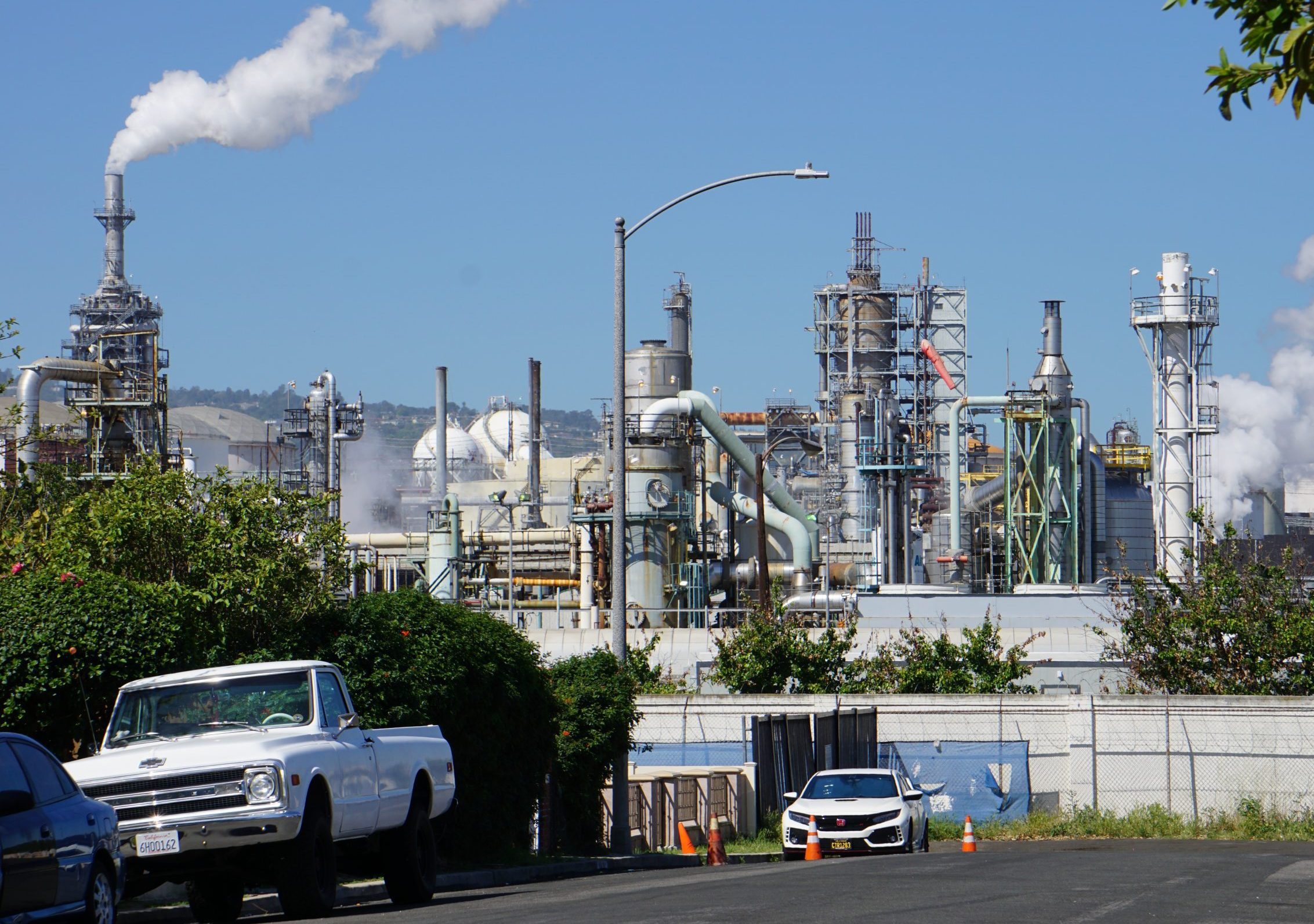An Oil and Gas Setback in Los Angeles Would Not Create Billions in Liability
Legal Planet: Environmental Law and Policy 2019-12-20

This week, Sean Hecht and I (in our capacity as attorneys in the Frank G. Wells Environmental Law Clinic at UCLA School of Law) sent a letter on behalf of the Los Angeles Neighborhood Land Trust to Mayor Eric Garcetti, the Los Angeles City Attorney’s office, and the Los Angeles City Council. (Our letter built off of a similar one sent by attorneys with the NRDC, Communities for a Better Environment, and the Center for Biological Diversity, which we attached to our letter.)
Our letter advocated for the adoption of a 2,500-foot health and safety buffer in the City of Los Angeles for oil and gas operations from “sensitive receptors” (such as schools and hospitals). The letter also challenged the conclusions and assumptions made in a July 29, 2019 report from the Petroleum Administrator (the “Report”) regarding the city’s potential legal liability stemming from implementing a setback. Below is a brief overview of our letter and the reasons why we felt compelled to write it.
The city’s potential liability from an oil and gas setback is nothing close to the Petroleum Administrator’s estimates
In the Report, the Petroleum Administrator analyzed, among other things: (1) the health and environmental impacts from oil and gas activities in Los Angeles; (2) whether the city should implement an oil and gas setback from sensitive receptors, and if so, what distance; and (3) the economic, employment, and fiscal impacts of establishing such a setback.
Addressing the city’s potential liability that could result from implementing a setback, the Report concluded that the city could face “major liability” to oil and gas operators in takings litigation. If liable, the city could be required to pay to affected operators “the present value of the lost profits from the oil and gas that would no longer be recovered” due to the setback. The Report estimated that, for a 1,500-foot setback, the value of those petroleum reserves could be as high as $97.6 billion. The Report concluded its assessment of the total potential fiscal impact to the city of implementing a setback by stating:
The estimated potential cost to the City of establishing a setback distance on existing operation is $724 million, which includes the minimum value of the current oil production, land value costs, well abandonment costs, environmental clean-up costs, and five years of litigation expenses. It may be lower if the sites are not cleaned up, wells stay unplugged, and the City is successful in the court systems. The estimated potential cost to the City of establishing a future setback distance could be as high as $97.6 billion in compensation for the future value of mineral rights owed from takings litigation.
Our letter in response to the Report sought to rebut some important but unstated assumptions underlying the Report’s conclusions.
First, we outlined several reasons that most oil and gas operators likely could not establish “vested rights” to extract oil from the ground, something which the Report alluded to but did not analyze. Worth highlighting here, the Report did not take into account that vested rights may be lawfully terminated following an “amortization” period, or a reasonable period of time where the operator can continue operations to recover a reasonable return on its investments.
Second, we challenged the Report’s conclusion that a setback ordinance could make the city liable for up to $97.6 billion in takings claims:
Inherently, these conclusions in the Report depend on the assumptions that (1) every operator will bring a lawsuit seeking compensation for a taking following the adoption of a setback ordinance, and (2) every operator would be successful in such a lawsuit and would be entitled to compensation in the full amount of their mineral rights.
These assumptions have no factual support and are not a reasonable projection of expected litigation activity following the implementation of a setback ordinance.
In assessing the likelihood of takings liability, the Report again did not consider the possibility that a setback could come with a reasonable amortization period, something which the city can—and should—include in a setback ordinance. If the city did so, a successful takings claim (which is itself unlikely) would not necessitate that the city pay the operator money for the value of the lost mineral rights. Rather, the city might only be required to extend the amortization period for that operator. We concluded:
Ultimately, the Petroleum Administrator cannot reasonably assess the City’s potential liability without providing both a good faith evaluation of the realistic likelihood of success for anticipated takings challenges and a proper assessment of the available remedies.
Third, we also rebutted the Report’s assumption that the city would be liable to pay for cleanup and abandonment costs for any oil and gas well affected by a setback.
Finally, we criticized the Report for failing to account for the financial benefits of a setback ordinance. Those benefits include, to name a few, reduced levels of pollution, reductions in health care costs, reduced traffic, noise, and light pollution, and reduced greenhouse gas emissions. As we stated in the letter:
The Petroleum Administrator did not address any of these benefits in the Report—a particularly glaring oversight since these benefits would be the justification for adopting a setback ordinance in the first place.
Why it matters to correct the record
 An oil refinery adjacent to a residential community in Wilmington, CA, located near the Port of Los Angeles. (Photo Credit: The Emmett Institute)
An oil refinery adjacent to a residential community in Wilmington, CA, located near the Port of Los Angeles. (Photo Credit: The Emmett Institute)Industrial oil and gas activities are rampant throughout the City of Los Angeles. As acknowledged in the Report, there are over 5,000 oil and gas wells across 16 remaining drill sites in the city, which take up about 24 acres of surface land. The establishment of a setback for oil and gas operations would likely affect most, if not all, of these oil and gas operations.
Not only would such a setback eliminate negative health and environmental impacts, but the shutdown of industry operations could allow for the creation of other, more beneficial uses of that land. Land use is one of the most contentious political issues in Los Angeles; land has become a scarce resource under high demand from competing uses such as housing, commercial structures, or open spaces. The Los Angeles Neighborhood Land Trust, our client for purposes of the letter, actively seeks to create parks and community gardens, especially in disproportionately-impacted communities located next to sources of pollution such as oil and gas production operations. A setback from sensitive receptors serves to protect these communities from further harm and presents the opportunity to revitalize the community through the development of healthy and sustainable greenspace.
Despite these obvious benefits of implementing an oil and gas setback, the Report’s characterization of the potential fiscal impacts sends the wrong message to the public. Members of communities adjacent to oil and gas activities might be concerned about the fiscal impacts of a setback ordinance, which could eliminate a nearby source of jobs and tax income. But the Report generates unwarranted fear and uncertainty about the basic costs of implementing a setback, which, for the reasons articulated in our letter, are not nearly as severe as the Report suggests.
As an example, the Los Angeles City Council recently voted unanimously to have the City Attorney provide legal advice on establishing an oil and gas setback. We welcome the City Attorney’s input, and we sent our letter to the City Attorney’s office to ensure that the Petroleum Administrator’s legal assumptions are not adopted in the City Attorney’s recommendations. However, one local news article explaining the vote and the Petroleum Administrator’s report highlighted that “the proposed restriction on new rigs alone could expose the city to between $1.2 billion and $97.6 billion in claims of illegal taking of mineral rights of 1.6 billion barrels of recoverable oil and gas reserves in the city, in addition to $1 million a year in anticipated litigation costs.” News agencies, and, by extension, their readers, accept these figures without questioning the Petroleum Administrator’s analysis (or lack thereof).
The Los Angeles Neighborhood Land Trust strives to promote community empowerment when it comes to important decisions about local land use and access to greenspace. The Report’s flawed and incomplete analysis of the potential fiscal impacts of implementing an oil and gas setback deprives local communities of the opportunity to make a fully informed choice about whether to support such a setback ordinance. For these reasons, we hope that our letter adds to the public dialogue from other groups that similarly find the Petroleum Administrator’s analysis of potential litigation liability to be lacking. It is vital to correct the public narrative and ensure that all stakeholders interested in the outcome of a potential setback ordinance have the same, accurate information about its benefits and impacts.
The post An Oil and Gas Setback in Los Angeles Would Not Create Billions in Liability appeared first on Legal Planet.